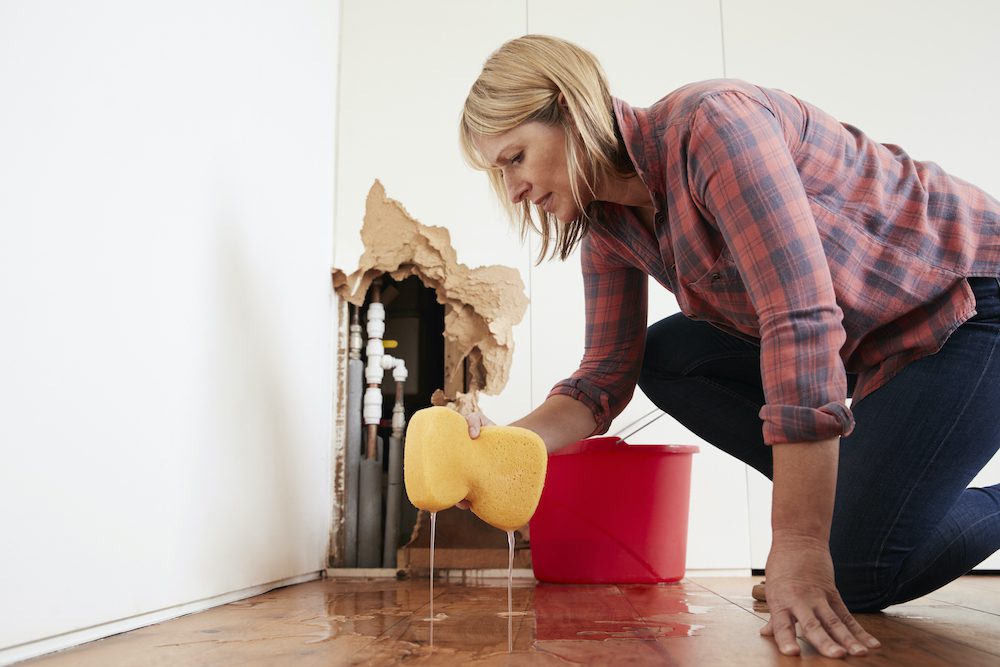We've discovered the article about Finding hidden leaks below on the internet and concluded it made good sense to write about it with you over here.
.jpg)
Early discovery of leaking water lines can minimize a possible calamity. Some tiny water leakages may not be noticeable.
1. Check Out the Water Meter
Every house has a water meter. Inspecting it is a proven way that assists you uncover leakages. For starters, turn off all the water sources. Make sure nobody will purge, make use of the faucet, shower, run the washing equipment or dishwashing machine. From there, most likely to the meter as well as watch if it will alter. Considering that no person is utilizing it, there need to be no activities. That shows a fast-moving leak if it relocates. Similarly, if you spot no changes, wait an hour or two and check back again. This implies you might have a sluggish leak that could even be underground.
2. Examine Water Consumption
Assess your water costs as well as track your water intake. As the one paying it, you should observe if there are any kind of inconsistencies. If you find sudden changes, in spite of your consumption being the same, it suggests that you have leaks in your plumbing system. Keep in mind, your water bill need to drop under the very same range every month. A sudden spike in your bill indicates a fast-moving leakage.
A steady rise every month, even with the exact same practices, shows you have a slow leak that's additionally gradually intensifying. Call a plumber to extensively check your building, especially if you really feel a warm location on your floor with piping below.
3. Do a Food Coloring Examination
30% comes from commodes when it comes to water intake. Test to see if they are running properly. Drop specks of food shade in the tank and also wait 10 minutes. If the color in some way infiltrates your bowl during that time without flushing, there's a leak between the container and bowl.
4. Asses Outside Lines
Do not neglect to inspect your outside water lines as well. Examination spigots by attaching a yard tube. Must water permeate out of the link, you have a loose rubber gasket. Change this and ensure all connections are tight. If you have actually obtained an automatic sprinkler, it will certainly aid get it professionally took a look at as well as kept every year. One tiny leakage can squander lots of water as well as increase your water expense.
5. Examine and Examine the Situation
Homeowners must make it a routine to check under the sink counters as well as even inside closets for any type of bad odor or mold and mildew development. These two red flags suggest a leakage so punctual attention is needed. Doing regular evaluations, also bi-annually, can conserve you from a major problem.
If you understand your house is currently old, maintain a watchful eye on your heating systems, tubes, pipelines and so on. Check for discolorations and compromising as many pipes and devices have a life span. They will certainly additionally naturally wear away because of wear and tear. Don't wait for it to escalate if you think leaking water lines in your plumbing system. Call an expert plumber as soon as possible so you do not wind up with an awful mess in your house.
Early discovery of dripping water lines can minimize a prospective calamity. Some tiny water leaks might not be visible. Checking it is a guaranteed means that assists you uncover leakages. One tiny leakage can waste loads of water as well as increase your water bill.
If you believe leaking water lines in your plumbing system, do not wait for it to rise.
WARNING SIGNS OF WATER LEAKAGE BEHIND THE WALL
PERSISTENT MUSTY ODORS
As water slowly drips from a leaky pipe inside the wall, flooring and sheetrock stay damp and develop an odor similar to wet cardboard. It generates a musty smell that can help you find hidden leaks.
MOLD IN UNUSUAL AREAS
Mold usually grows in wet areas like kitchens, baths and laundry rooms. If you spot the stuff on walls or baseboards in other rooms of the house, it’s a good indicator of undetected water leaks.
STAINS THAT GROW
When mold thrives around a leaky pipe, it sometimes takes hold on the inside surface of the affected wall. A growing stain on otherwise clean sheetrock is often your sign of a hidden plumbing problem.
PEELING OR BUBBLING WALLPAPER / PAINT
This clue is easy to miss in rooms that don’t get much use. When you see wallpaper separating along seams or paint bubbling or flaking off the wall, blame sheetrock that stays wet because of an undetected leak.
BUCKLED CEILINGS AND STAINED FLOORS
If ceilings or floors in bathrooms, kitchens or laundry areas develop structural problems, don’t rule out constant damp inside the walls. Wet sheetrock can affect adjacent framing, flooring and ceilings.
https://www.servicemasterbyzaba.com/blog/how-to-detect-water-leakage-in-walls/

As a serious person who reads on Leaking water lines, I imagined sharing that post was smart. Are you aware of another person who is fascinated about the topic? Feel free to share it. Thanks a lot for your time invested reading it.